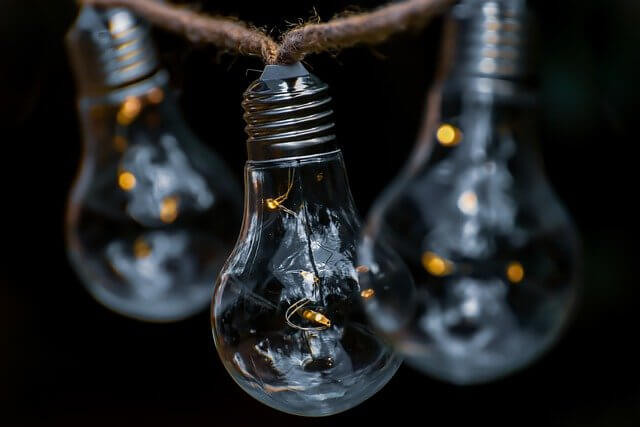How does electrial energy be converted to heat energy? How do thermal power stations work?
Electric energy can be used to produce work. An electric motor can be used to lift heavy objects. Some of the electrical energy is transformed into potential energy as the object is raised, while some is transformed into heat, which raises the temperature of the motor and its surroundings.
Many experiments have shown that whenever one form of energy disappears, an equal amount of another form, or forms, appears. Energy can be transformed but the total amount of energy remains the same. (The law of Conservation of Energy).
THERMAL POWER STATIONS

Source : pixabay.com
Electrical energy is not a natural, or primary source, of energy. During the conversion of primary energy sources into electrical energy about 70 % of the energy input is wasted and lost as heat energy.
The electrical energy produced is a very convenient form of energy with many applications. It also has the advantage that it can be distributed very quickly all over the country wherever the wires take it.
Electricity is generated in power stations using coal, petroleum and nuclear energy as our primary energy source. Useful additional energy is produced from hydroelectric schemes.
The basic energy chain is the same in all power stations. Energy is released when the coal burns. It is used to boil water and then heat the steam to a high temperature. Burning coal also produces large amounts of carbon dioxide which is released into the air together with the other waste gases such as sulphur dioxide.
The steam is made very hot so that it is at a very high pressure which provides enough force to turn the steam turbines.
The spinning turbines are connected to the coils of large generators. As these coils spin they induce a high voltage in the fixed coils surrounding them.

Source : pixabay.com
Thermal power stations produce much of the polluting gases like sulphur and nitrogen oxides. These gases cause acid rain. All fuels produce carbon dioxide when they are burned and this is the major gas involved in the “green house” effect.
Another problem is that sooner or later the fossil fuels that are used in power stations will be used up.
Nuclear power stations are about as efficient as thermal power stations, but they produce little pollution, unless there is an accident like the one that happened at Chernobyl in 1986. They also generate radioactive waste, which needs to be stored for many years.
One of the most common sources of energy for producing electricity is falling water. This never runs out and may be safer and less polluting than other sources. In hydroelectric power stations the power of falling water is used to turn turbines, instead of steam. Countries with many mountains and plenty of water, are most able to benefit from this energy source.